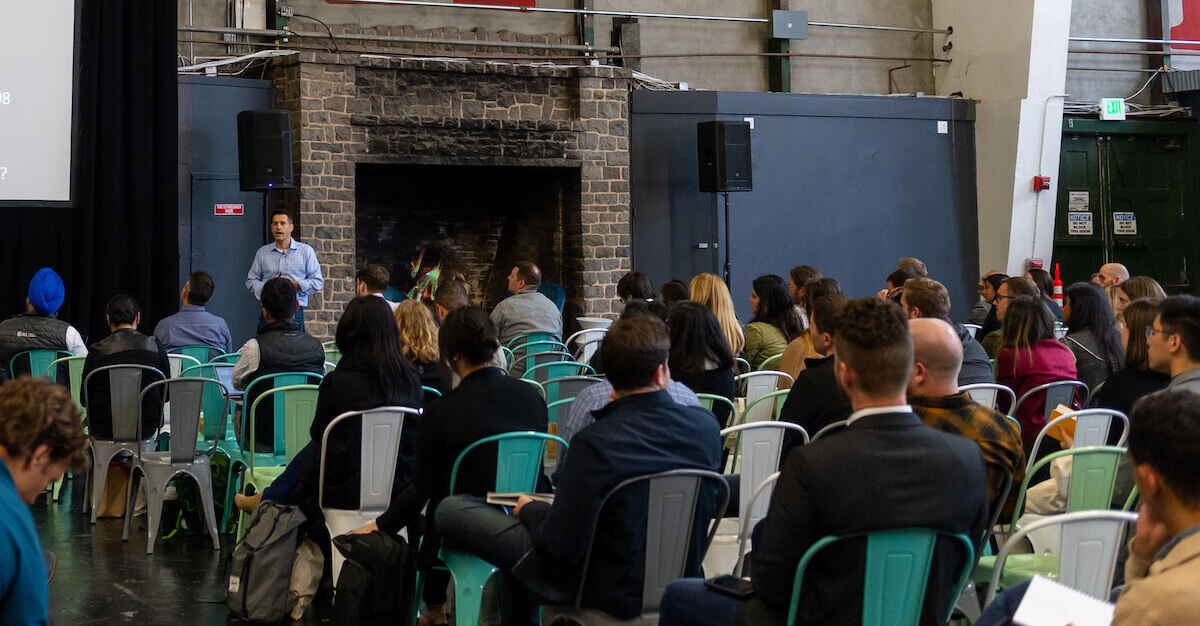I have to be honest with you. I’ve been reading a lot of Rachel Hollis, Brené Brown, and Jen Sincero lately. Over the past few months, I’ve been waking up earlier, exercising regularly, and eating more kale than I’ve ever imagined possible.
So what does all this TMI have to do with product management?
Last month at the ProductCraft Conference, I had the opportunity to sit in on the lab session run by Dan Olsen, author of “The Lean Product Playbook.” I’ve read and listened to a lot of his content, but I hadn’t yet had the opportunity to hear from him in person.
So it was to my surprise that when Dan took the stage, his message was this: You have to win on unique differentiators.
Now, he may have been referring to building great products, but I think this applies to the way we work, too. Hear me out.
The Kano Model
At the beginning stages of building a product, there are lots of things to think about. Olsen encouraged product managers to use the Kano model to identify the two most important factors to consider when conjuring up a product strategy:
- How the products they build will fulfill users’ wants and needs
- How those products compare to products that already exist
Tell Me What You Want, What You Really Really Want
PMs shouldn’t think about building features, but rather about what their users want to get out of their product. Why do they want that feature? How would they benefit? What do they want to achieve that they can’t already?
Olsen pointed out that there is a “problem” space (what the user is looking to get out of it), and a “solution” space (the product itself). Olsen says to start in the problem space. For instance: What are all the ways you could help someone prepare their taxes? Once you have that list of options, work backward into developing the product.
When looking at user needs versus satisfaction, your product’s features will fall into three categories: delighters, performers, and must-haves. Must-haves, unsurprisingly, are the base requirements that the product needs to provide. If your product doesn’t have these, users are unlikely to use it. Performers fall into the category of the more features you add, the happier users will be. And lastly, delighters. These are unexpected features that cause joy for users and make all of the difference. Think pockets on a dress.

Olsen challenged the audience to go back and time and think about being early decision makers at Airbnb, previously known as AirBedandBreakfast. What were people looking for that they couldn’t find in the existing market?
The audience suggested that they wanted an entire space to themselves so they could have access to things like a kitchen or laundry room. They also desired authentic and immersive experiences, not tourist traps, which included staying in areas outside of major cities.
But in addition to their wants, they also sought non-negotiables like affordability, cleanliness, and safety, which were already provided by competitors.
Comparison Is the Thief of Joy Necessary When Building Products
If you’re building a product, you need to look at the options that are already available. What are those competitors doing well, not well, and really excelling at?
During the session, we broke off into small groups for an exercise ranking whether certain characteristics were of high, medium, or low importance to the product Airbnb was building. We then compared those rankings to two of its existing competitors: hotels and hostels.
We realized that hostels were going to win on things like affordability and social experiences, whereas hotels would win on cleanliness and safety. So where does that leave Airbnb? Attendees argued that a good product strategy would focus on providing a variety of room types or unusual locations.
If Airbnb had set their product strategy on a need or want that was already fulfilled (i.e. safety), they wouldn’t have become so profitable and well-known. By honing in on attributes that competitors weren’t great at, then knocking it out of the park, they were able to achieve success.
Another great example of this? Instagram.
At the time, there was a multitude of image-sharing apps that were popping up. So needs were being met (sharing photos). But what about delight? Instagram developed these three capabilities that were unique differentiators:
- Filters
- Square photos (so all your photos fit together nicely)
- Fast sharing
By having a clear product strategy (“fast, beautiful photo sharing”), Instagram was able to win.
The strategy was simple, but also effective and true.
Products and people excel when they hone in on a few attributes and do them really well. If you spend too much time on things that other people already have covered, or spread yourself to be okay at a lot of things but great at nothing, what leverage do you have? Product managers should strive to be the master of their craft, not a jack of all trades.
Identify what will make something great and go all in. Olsen might have been referring to building a product, but I think this advice might apply to life, too.

